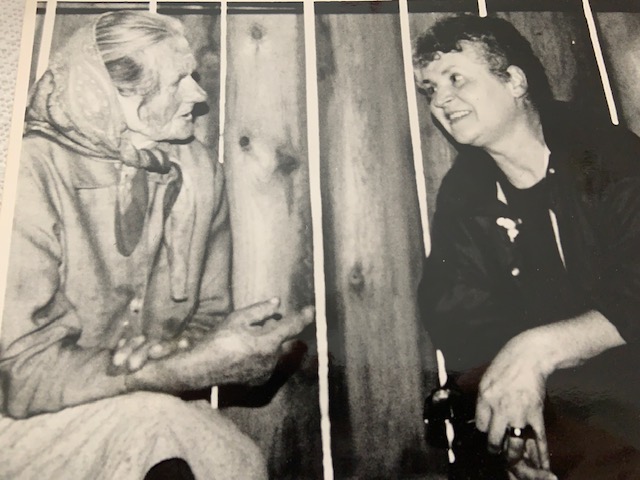And there was really no place to go. But my grandfather always contended that you don’t do anything… after all, he used to say, ‘Es iz nisht keyn hefke velt.’ He meant that life had an orderly way of being conducted and that people who did nothing wrong need not be afraid of anything.”
We’re listening to the story of Sally Frishberg, who was only nine years old when her family went into hiding in a Polish farmer’s attic. She spent two years in the cramped space with 14 extended family members. As an adult, Sally created one of the first public high school classes on the history of the Holocaust. She continues to speak to schoolchildren today as an active member of the Museum’s Speaker’s Bureau.
Sally Engelberg Frishberg was born in 1934 to the only Jewish family in the rural village of Urzejowice, Poland. Interwar Poland was marked by growing antisemitism, yet Jews and Poles still lived side by side and even developed positive relationships on some occasions. Sally’s grandparents, for example, took care of a local Polish boy, Staszek Grocholski, when he and his sister were suddenly orphaned. Sally’s family made sure that Staszek had food and clothing, and their children – including Sally’s mother – became Staszek’s close friends. Years later, after the Nazi occupation of Poland, Staszek Grocholski searched the fields outside the village and found Sally’s family in hiding. As winter of 1943 approached, Staszek convinced his wife to take Sally’s family into their home. As Professor Sam Kassow wrote:
“Even in normal circumstances, for a poor family to take in 11 people into a modest home, feed them, empty their chamber pots, and attend to their various needs is an enormous burden. To do so for two years is even more difficult. To hide these people in the conditions of wartime Poland was to risk death at every turn. The German authorities threatened Poles who helped Jews with the death penalty and we know of at least 750 Poles who were executed for helping Jews.”

Hear Sally’s story of rescue and hiding firsthand on Those Who Were There: Voices from the Holocaust, the only Holocaust history podcast to bring the firsthand testimony of survivors, liberators, and witnesses out of the archives. This season is a co-production of the Fortunoff Video Archive for Holocaust Testimonies and the Museum of Jewish Heritage.
Subscribe and listen to the voices of Those Who Were There on Apple Podcasts, Spotify, or Stitcher.